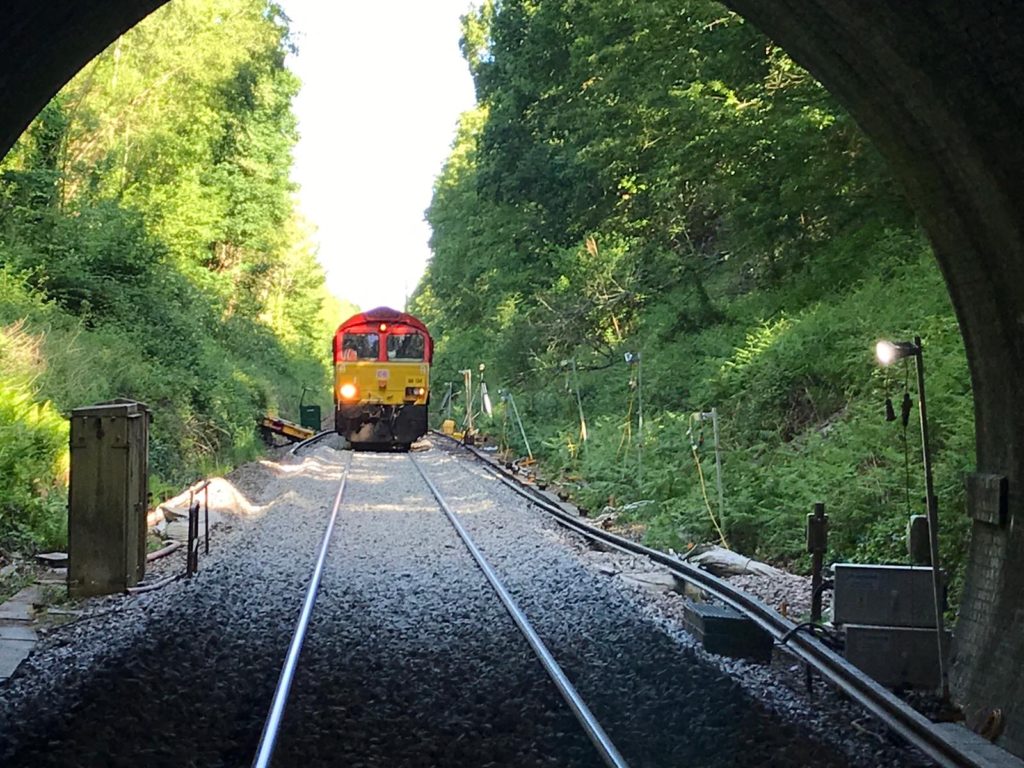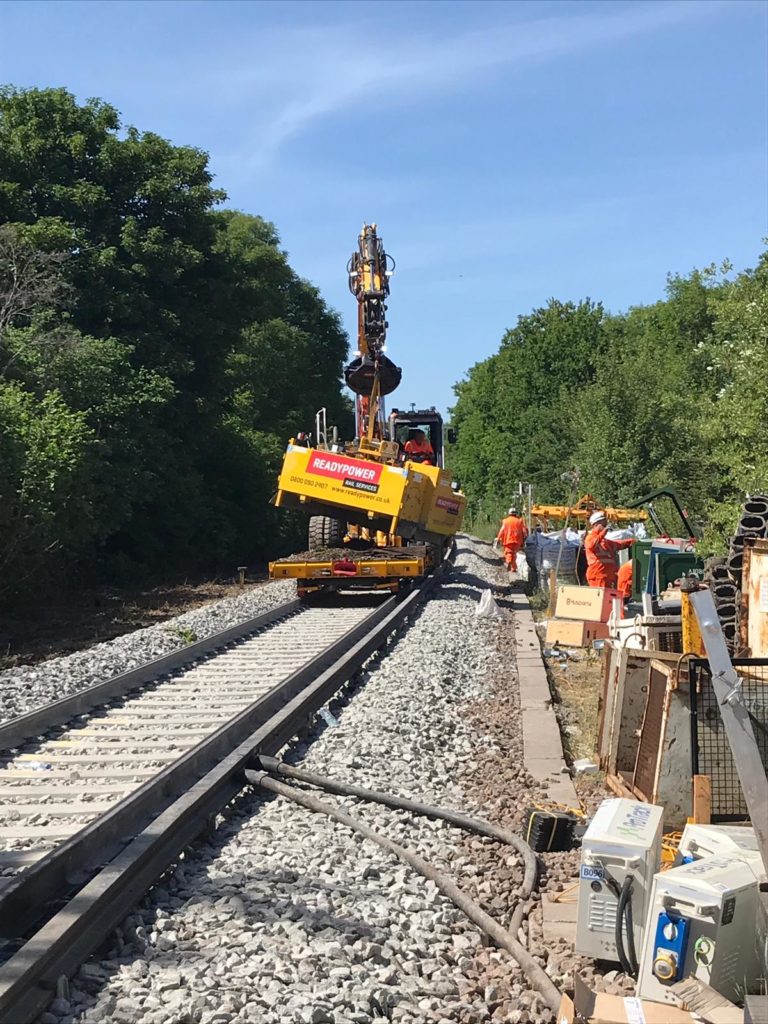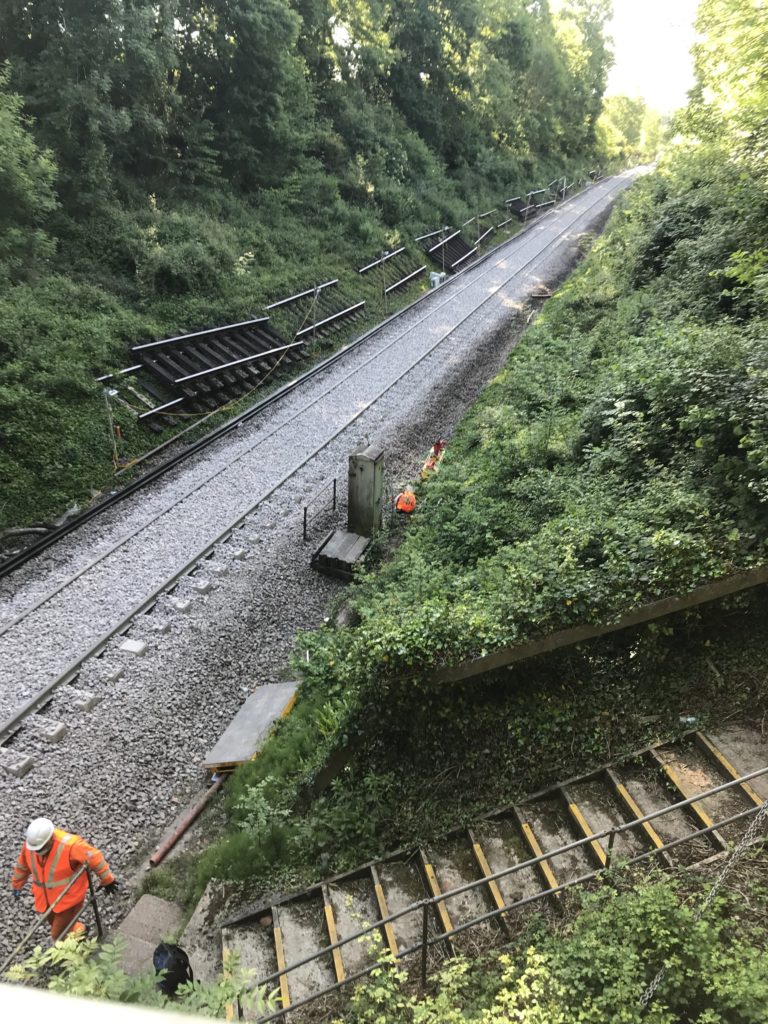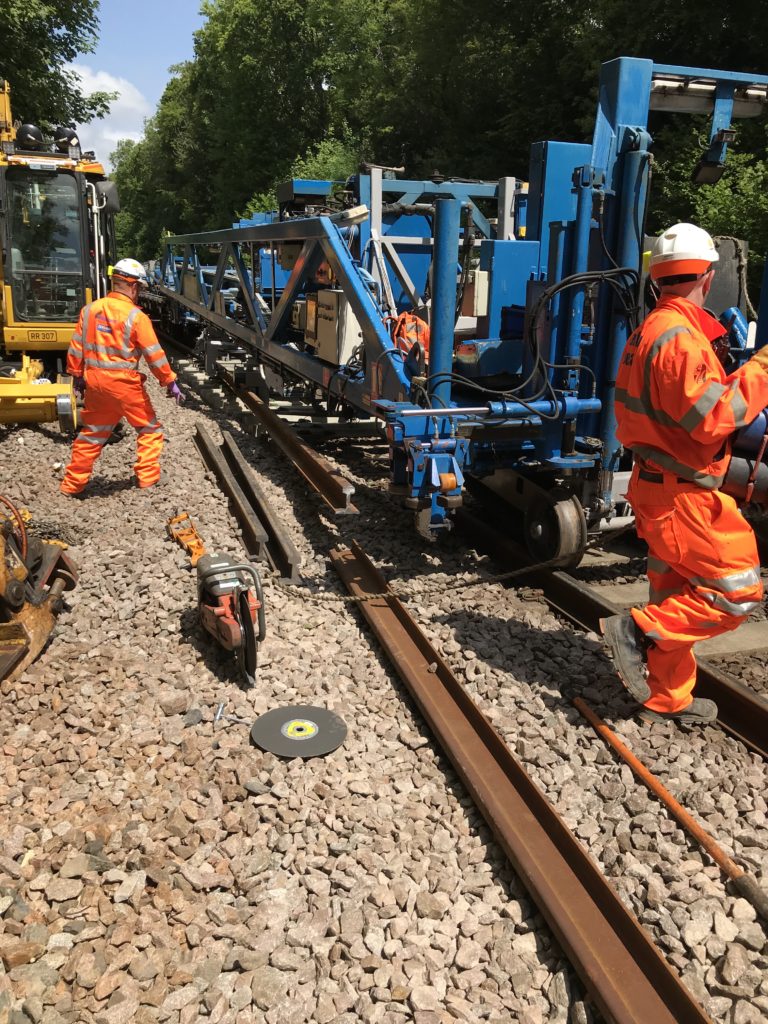Over the late May bank holiday and the following week, South Rail Systems Alliance (Colas Rail, Network Rail and AECOM) engineers replaced just under one mile (1,400 metres) of single-line track between Fareham and Botley on the Eastleigh-Fareham line, which forms part of the route from London to Portsmouth via Basingstoke.

The track was life-expired and, with a reduced number of trains running due to the Covid-19 crisis, this was an ideal opportunity to do the work. It was also school half term, so the small number of passengers who were using the line was further reduced.
Those passengers who did wish to travel were bussed between Eastleigh and Fareham, but those buses often only had single-figure passengers on them, vindicating Network Rail’s choice of timing.
The line was to be closed for a week, from Saturday 23 May until Saturday 30th.
As the track to be renewed was a single-track railway – it had been reduced from double to single track in 1973 – the normal practice of having supplies and equipment on the adjacent track was not possible. The line would have to be completely removed, dug out, new ballast placed and then new track laid. This would require the use of an NTC (new track construction) machine, which can lay sleepers ahead of itself, feed the rails into place and clip it up, ready for the machine itself to use that track as it moved forward.
In preparing for the work, Covid-19 had to be taken into account. All workers were instructed on the importance of distancing. High Motive, which provided a 24-hour service for duplex communications, back-to-back radios and RPE (respiratory powered equipment), as well as the MyZone proximity warning system for RRV (road-rail vehicle) exclusion zones, had sterilisation units on site so that equipment could be cleaned between shifts.
Work began in the early hours of Saturday 23 May. Much of the first day was taken up with cutting the old track into panels and lifting those out, with sleepers still attached, to be piled up alongside the line for later removal by train once the new track had been laid.
By the Saturday evening the old track was out and two new rails were being laid alongside the excavated trackbed, ready for the NTC machine when it started to lay track. The individual lengths of rail were welded together in continuous lengths.
The route included both track in the open and in Tapnage tunnel, (122 yards – 111 metres). Although the tunnel would require lighting, it was too short to need forced ventilation, although workers needed to be even more aware of the dangers of ballast dust, as well as having to keep two metres apart due to Covid-19!



Balfour Beatty’s NTC machine started work in the early hours of Sunday 24 May. At the front of the machine, two small ‘caterpillar’ tracks support a conveyor gantry that brings concrete (in this case) sleepers from the body of the machine and lays them in place, 600mm apart. It can place 10 sleepers per minute, although, with breaks and adjustments, it tends to lay around 1.4km (1,530 yards) per day – coincidentally, the same length as this track renewal.
Sleepers are supplied from a rake of special flatbed wagons pulled by and behind the NTC, with semi-automated ‘pickers’ running on rails along the edges of the flatbed wagons, bringing pallets of sleepers to the NTC and loading them into its hopper.
Once the sleepers are placed, the rail lying alongside the track is guided by a series of rollers, located on the NTC itself, into position and laid between the preinstalled clips. The rail is then clipped up before the wheels of the NTC machine run over the newly laid track.
The whole process is continuous and the entire length of new track, including through Tapnage tunnel, was completed in one 24-hour session.
Once the track was in place, the top layer of ballast was placed over it – the bottom ballast supports the track while the top ballast, above the level of the base of the sleepers, retains it in place.
One of Balfour Beatty’s tampers then took its first run over the new track. This process compacts and consolidates the ballast and also positions the track so that it is straight and level. Over the next two days, four more tamping runs would be carried out, each one improving the quality of the track so it would be in the best possible condition once the railway was handed back.
Over the same period of time, the rails themselves were stressed and trial running took place. Then it was just a question of tidying up, removing the old track panels and any other waste material, and handing the whole section back to the operator for Saturday morning.


